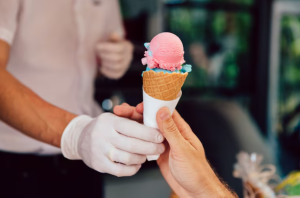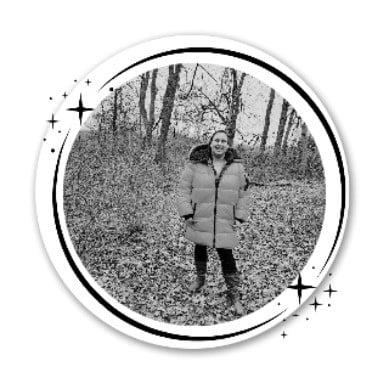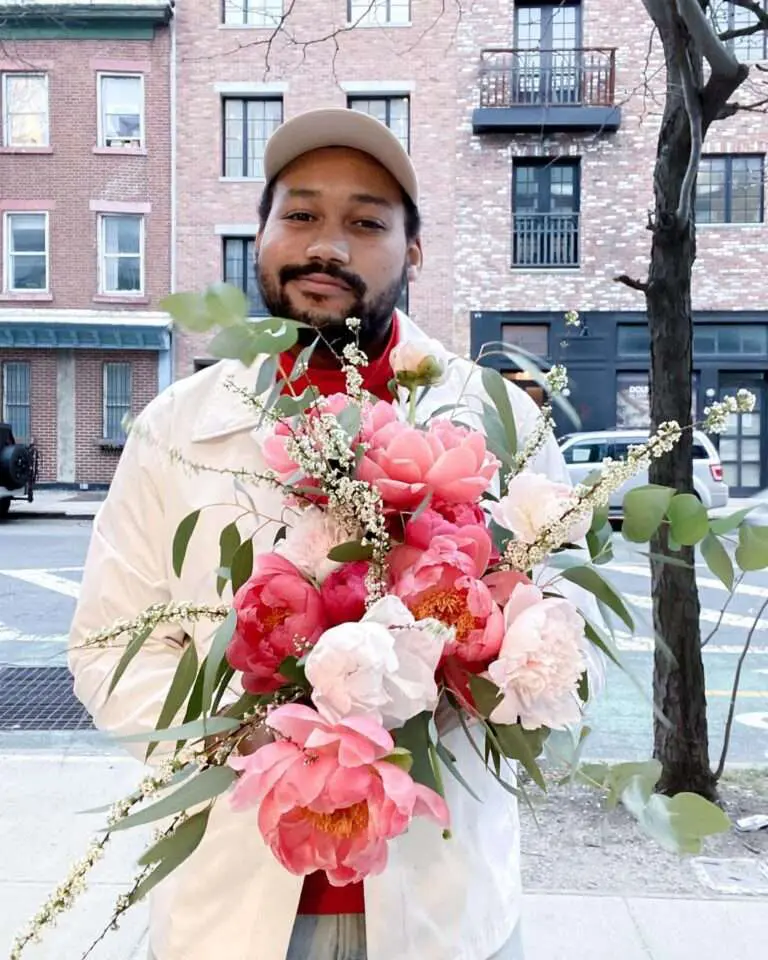The sweet scent of lavender lingers in the air as customers enter the door of your shop. They pause. Breathe deeply. And reach for their wallets. This is not a coincidence—it’s smart business. Floral shops that added lavender flower bouquets to their inventory in 2024 saw an average 23% increase in customer return rates, according to recent industry data.
But here’s what most florists miss: lavender isn’t just another pretty purple flower. It’s a strategic business asset hiding in plain sight.
In 2025, the floral industry is changing. Traditional roses and lilies still sell, but customers increasingly want something different—something with meaning, longevity, and a story to tell. Lavender delivers all three.
Think of lavender as the Swiss Army knife of your floral arsenal. It works in rustic farm bouquets, modern minimalist arrangements, and everything in between. Its subtle color complements nearly every palette. Its fragrance creates an experience that lasts far longer than the bouquet itself.
And yet, most floral businesses treat lavender as an afterthought—a filler flower at best.
That stops today.
By the time you finish reading this guide, you’ll understand exactly why lavender flower bouquets need to be front and center in your shop in 2025—and how to use them to transform both your creative offerings and your bottom line.

Lower your delivery costs by 23%
How we reduce costs:
- No delivery vehicle expenses
- Optimized local routes
- Pay-per-delivery model
- Average 23% delivery cost reduction
Lavender Bouquet Trends 2025
Get ahead with the latest lavender flower trends.
Learn about the latest styles to set your shop apart.
Explore modern bouquets that will attract customers.
Popular Colors and Styles
In 2025, color schemes featuring shades such as soft blush, muted lavender, and warm peach are becoming popular. These hues provide a sophisticated twist to traditional floral choices and appeal to a broader audience. Florists are favoring softer, more nuanced palettes that include these tones, offering alternatives to typical reds. The appeal of these colors lies in their flexibility and ability to blend seamlessly with the various shades in floral arrangements, adding depth without overpowering the ensemble.
Contemporary arrangement styles are leaning towards monochromatic bouquets. Florists are using varying shades of a single color to play with texture and tone, creating coherent yet visually captivating bouquets. Monochromatic designs are seen in weddings, with many brides choosing such styles for their timeless appeal. Whether opting for an all-white classic look or dramatic shades like black, the focus is on creating bouquets that are both elegant and innovative.
Innovative Lavender Flower Bouquet Designs
Unique bouquet designs are making waves, encouraging florists to experiment with shapes and sizes. Rather than sticking to traditional round shapes, designers are playing with asymmetrical forms, cascading designs, and even geometric shapes. This shift towards innovation allows florists to craft personalized bouquets that stand out and cater to clients’ specific tastes and preferences. By encouraging creativity, floral shops can appeal to trend-conscious customers and set themselves apart from competitors.
Combining non-traditional elements like herbs or dried flowers within bouquets introduces new textures. This experimentation with varied materials adds an unexpected twist and enhances the visual interest. Embracing unconventional materials is a way to breathe new life into traditional arrangements, making them suitable for modern weddings, events, and various celebrations. Florists can draw inspiration from art and architecture, using them to create bouquets that function as both a floral centerpiece and a conversation starter.
Embracing the Unconventional
As floral trends evolve, adopting unconventional ideas can help florists keep up with changing consumer demands. Borrowing concepts from other industries, like fashion and interior design, allows for fresh interpretations of floral arrangements. The idea is not only to surprise but to provide a memorable experience for the customers through creative designs. Encouraging clients to think outside the box and consider floral options beyond standard roses or lilies can open up new avenues for business growth.
Shifting Design Concepts
The rise in popularity of bouquet design is not just about aesthetics; it’s also about how they fit within broader lifestyle trends. Minimalism is one approach that has gained traction—it requires fewer flowers but highlights the beauty of each element. Additionally, the imperfect, ‘wild’ design style has gained a dedicated following due to its naturalistic appearance. This style focuses on arranging flowers as organically as possible, offering a sense of freedom and spontaneity that clients find appealing.
Floral design trends are constantly evolving, and keeping up requires effort but offers substantial rewards. For florists aiming to stay ahead, exploring design literature and attending workshops can be immensely beneficial.
Benefits of Lavender Flowers in Floral Design
Lavender stands out due to its aesthetic charm and versatility.
Its fragrance calms and enhances any environment.
Explore why lavender is a foundational element in floral design.
Aesthetic Appeal of Lavender Flowers
Lavender’s visual charm is evident in its soft purple hue, which is both timeless and trendy. Its color blends well with many other flowers, making it a preferred choice for enhancing various floral arrangements. This adaptability ensures it fits well with themes ranging from modern to traditional. Whether paired with the classic elegance of roses or the playful touch of peonies, lavender flowers provide a harmonious balance that works in many settings. This is one reason lavender was used in 16% of wedding bouquets in 2023, according to a survey by The Knot.
Another visual advantage is lavender’s ability to complement various styles, from rustic to minimalist. This makes it a staple for florists aiming to cater to a wide audience. Research shows that lavender is chosen for 28% of bohemian-themed weddings and 22% of classic weddings. Its visual adaptability is well-documented in floral design literature, like “The Flower Recipe Book” by Alethea Harampolis. This book offers insights into creating arrangements that feature lavender prominently while maintaining harmony with other elements.
Fragrance and Therapeutic Benefits
The lavender flower is famous for its scent. Its calming aroma is one of its biggest draws, with 65% of florists in a 2023 survey noting that customers specifically request it for its fragrance. This soothing scent creates an environment that enhances well-being, making it an excellent addition to relaxing spaces.
Versatility in Design
Lavender’s versatility in floral design cannot be overstated. It seamlessly fits into a range of themes. This makes it an ideal flower for florists looking to provide diverse options for clients. Despite its peak season in summer, lavender remains available year-round. Statistics indicate that 85% of florists report a consistent supply throughout the year, enhancing its practicality.
Its ability to transition between design styles, like the shift from classic to bohemian, shows its adaptability. This quality allows florists to experiment with design, bringing lavender into projects that require a touch of creativity.
Symbolism and Meaning of Lavender Flowers
Lavender’s symbolism is rich and varied. Often associated with purity, devotion, and serenity, these meanings add layers of significance to floral arrangements. This symbolic depth speaks to those looking for meaningful expressions in their floral designs. It is particularly valued in contexts like weddings and celebrations where every element is carefully chosen for its deeper meaning.
The psychological impact of the lavender flower, specifically its purple hues, is linked with royalty and creativity. Studies back this association, highlighting lavender’s potential to boost mood and productivity. This symbolic richness establishes lavender as more than just a beautiful flower but a powerful communicative tool in the language of flowers.
Practical Benefits and Availability
The practical benefits of using lavender in floral design further its appeal. Fresh-cut lavender flower remains vibrant for about 7-10 days, offering florists a reliable option for long-lasting arrangements and gifts. When dried, its flowers can maintain their scent and appearance for months, adding to its cost-effectiveness.
Lavender’s widespread availability helps sustain its popularity among florists. Its ability to flourish across different climates ensures consistent supply. This consistency is crucial for floral shops that rely on dependable inventory. Lavenders’ long-lasting nature combined with its meaning and visual appeal firmly establish it as a foundational element in contemporary floral design.
Lavender Bouquet Care Tips
Extend bouquet life with simple care steps.
Avoid common mistakes that cause wilting.
Learn effective water, light, and trimming techniques.
Best Practices for Maintenance
Keeping lavender bouquets fresh requires careful attention to detail. Follow these steps to maximize their vase life and appeal:
Prepare the Stems: When you first receive the bouquet, cut each stem at a 45-degree angle. Use a sharp knife or pair of scissors. This increases the surface area for water uptake. Remove any leaves that would sit below the waterline in the vase; these can lead to bacterial growth.
Water Level Management: Lavender doesn’t need much water. Only a half inch of water in the vase is ideal, as lavender prefers drier conditions. Changing the water every 1-2 days is crucial. Fresh water prevents bacteria from forming.
Temperature and Light: Place the bouquet away from direct sunlight and any heat sources. The ideal room temperature for lavender is between 65-72°F (18-22°C). This helps maintain freshness.
Regular Maintenance: Every time you change the water, re-cut the stems. This promotes optimal water absorption. It’s a small step but makes a significant difference.
Common Care Mistakes
Avoiding mistakes is as important as following care instructions. Here’s how you can prevent common errors:
Overwatering: It’s tempting to fill the vase, but lavender thrives in low water. Stick to the half-inch rule.
Neglecting Stem Cutting: Forgetting to trim the stems when changing water limits hydration. Make it a routine to re-cut a little off the stem each time you replace the water.
Dirty Vases: Dirty vases house bacteria. Thorough cleaning before each use is essential. Use a brush and mild detergent to remove residues.
Environmental Factors: Drafts or heat sources can be detrimental. Position your bouquet in a stable area away from vents or appliances.
By tackling these frequent errors, you enhance your lavender bouquet’s life. With enough clean water and proper care, fresh-cut lavender can last about 5-10 days in a vase, offering its soothing aroma longer.
Sustainable Sourcing for Lavender Bouquets
Eco-friendly sourcing is essential for ethical floristry.
Sustainability can appeal to consumers and boost business profits.
Supporting local growers enhances market resilience and reduces impact.
Ethical Sourcing Practices
Sourcing lavender ethically requires thoughtful approaches to ensure fair treatment of workers, environmental responsibility, and maintaining high-quality standards. Ethical sourcing goes beyond just getting the product. It involves evaluating the entire supply chain, often requiring detailed price audits and fostering transparent supplier relationships. This may encompass verifying certifications from organizations like Fair Trade or Rainforest Alliance to ensure compliance with ethical and environmental standards.
Supporting local lavender growers can significantly impact both the environment and the community. By prioritizing local farm partners, florists reduce carbon footprints related to transportation and encourage biodiversity. This approach strengthens local economies and supports farmers committed to sustainable agriculture. A 2023 study showed 61.7% of consumers are willing to pay a 10% premium for locally sourced flowers. This indicates a strong market preference for local, eco-friendly options which florists can leverage to enhance their offerings and strengthen their customer base.
Benefits of Sustainability
Green practices in floral businesses offer substantial benefits. Sustainability isn’t just about “doing good,” it’s a powerful business strategy that can differentiate florists in a crowded market. With a significant portion of consumers prioritizing eco-friendly options, florists have a real opportunity to leverage these preferences. According to a recent survey, 65% of shoppers prefer retailers who offer flowers from local sources.
This preference can translate into increased sales and customer loyalty. By adopting sustainable practices, floral businesses can tap into a willing base of consumers and boost revenue. Sustainable practices can also enhance a brand’s public image. Florists who actively communicate their commitment to the planet can cultivate a loyal following.
Yet, it’s not just about the immediate benefits. A commitment to sustainability also means reducing future risks associated with climate change. This includes supply chain disruptions and increased costs.
Consumer Preferences for Eco-Friendly Options
Preferences for eco-friendly options in floristry reflect broader global trends toward ethical consumerism. Many customers today prioritize sustainability when making purchasing decisions. According to some data, 58.43% of individuals felt that it is environmentally responsible to buy from eco-friendly floral businesses.
These florists can connect deeply with this eco-conscious demographic by providing sustainably sourced lavender. This trend isn’t restricted to a niche group; rather, it’s becoming mainstream. Sustainable sourcing aligns with values across generations, resonating with millennials and Gen Z who prioritize environmental issues.
Challenges in Sustainable Sourcing
Despite its numerous benefits, sustainable sourcing can be challenging. One major hurdle is the initial cost associated with shifting to eco-friendly practices and suppliers. Sustainable products can often be pricier due to their ethical sourcing and production methods. Small floral businesses, in particular, might struggle with these expenses. However, the long-term payoff can often outweigh these costs.
Supply chain transparency is another challenge. Ethical sourcing demands complete visibility into the supply chain, which can be difficult to achieve, especially with overseas sourcing. Working with certified suppliers and seeking out industry partnerships can help florists navigate these complexities.
Another challenge lies in balancing demand with sustainable practices. High consumer demand can sometimes pressure suppliers to cut corners, compromising the ethical sourcing promise. Florists need to regularly assess their sourcing relationships and ensure that their partners adhere to ethical practices.
Advanced Tips for Lavender Bouquet Success
Boost your bouquet skills with new design tricks.
Handle bouquet arrangement problems with ease.
Create standout bouquets for happy customers.
Additional Design Techniques
Advanced Arrangement Methods
Creating standout lavender flower bouquets requires more than just placing flowers in a vase. Consider exploring advanced arrangement methods that add depth and interest. Start by integrating spiral techniques, where flowers are placed at an angle, creating a natural, open arrangement that stands out. Each stem should crisscross as you build the bouquet. This method not only brings stability but also ensures an even distribution of color and texture throughout the bouquet.
Experimenting with vertical arrangements is another approach. By using varying stem lengths, you can achieve height and dimension, offering a more dynamic visual effect. For instance, allowing some lavender spikes to rise higher than surrounding blooms can draw attention and create a sense of movement. It’s crucial to balance these elements, ensuring that the bouquet maintains harmony and doesn’t appear cluttered. Engaging in regular practice sessions can help you master these techniques effectively.
Creative Ways to Incorporate Lavender
Integrating lavender into bouquets creatively can transform an ordinary arrangement into something extraordinary. Begin by pairing lavender with unexpected flower types like dahlias or sunflowers for surprising contrasts. This blend not only enhances color palettes but also introduces varied textures—a critical element for visually appealing designs. Moreover, attaching lavender to wires and shaping them into intricate loops or arches can add a sophisticated touch to the bouquet.
Consider incorporating non-floral materials such as dried grasses or feathers to build layers. Such additions can enhance the rustic charm of lavender, creating themes like a countryside or bohemian aesthetic. Additionally, playing with complementary colors like whites and deep greens can magnify lavender’s natural hue, making it pop. It’s beneficial to keep an eye on current trends to fuel creativity and maintain bouquets that resonate with customers.
Common Pitfalls and How to Avoid Them
Identifying Challenges in Floral Arrangements
One common pitfall in floral arrangements is lacking balance, which can result in a top-heavy or lopsided look. This usually happens when florists fail to distribute bloom weight evenly or ignore the bouquet’s silhouette. To prevent this, start your arrangement with a well-balanced base foundation. Select a variety of sizes for your bouquet’s base, ensuring support and symmetry from the get-go. Remember, a bouquet should look appealing from all angles, not just the front.
Another issue is overstuffing bouquets with too many elements. While a full appearance of petals can be attractive, overcrowding can diminish the elegance of featured flowers like lavender. Instead, focus on showcasing lavender’s unique attributes by providing some ‘breathing space’ between the blooms. Avoid adding every possible decoration; be selective to ensure each element serves a purpose in enhancing the overall design.
Providing Clear Solutions and Best Practices
Simple changes can significantly improve your bouquet-making process. Adopt the habit of consistently laying out your materials before starting. This allows you to visualize the final arrangement and foresee potential spacing or color conflicts. Furthermore, ongoing education through floral design workshops or online tutorials can help hone skills and introduce new techniques.
Setting up a dedicated glance to review your work from different perspectives is key. As you work, take regular steps back to observe your bouquet from various angles and under different lighting. This practice can reveal imbalances or areas that require refining. Peer feedback is also valuable. Collaborate with other florists or join floral design groups for constructive critiques to elevate your craft. By making these practices routine, you can consistently produce high-quality bouquets that impress and satisfy customers.
Lavender Flower Bouquet

Lavender bouquets are proving to be essential additions to floral shops in 2025. Their visual appeal, calming fragrance, and versatility make them standout choices for both florists and customers. By incorporating lavender into your designs, you’re not just offering beautiful arrangements—you’re providing experiences that engage multiple senses and create lasting impressions. To further enhance your floral offerings, consider exploring innovative design concepts that can resonate with customers. Embracing unique designs can elevate not only the visual impact of your arrangements but also your overall profitability. For a deeper dive into creative concepts that boost customer attraction and sales, check out these insightful ideas on creative flower design.
As florists aim to cater to an upscale market, understanding the nuances of selling luxury flowers becomes crucial. High-end clients often seek unique and exceptional floral designs that reflect their tastes and lifestyles. This approach not only attracts affluent consumers but can also significantly boost profitability for your floral business. For more insights on attracting high-end clients with luxury floral offerings, consider exploring informative resources on selling luxury flowers.
The sustainability aspect of lavender also positions your shop as environmentally conscious, meeting the growing demand for eco-friendly products. With proper care techniques and creative design approaches, these purple blooms can become signature offerings that set your business apart.
As you move forward, remember that lavender bouquets represent more than just a trend—they’re a smart business decision that addresses customer desires for beauty, wellness, and sustainability in one elegant package. Start by adding a few lavender arrangements to your selection, observe customer responses, and gradually expand your offerings.
The floral industry continues to evolve, and shops that embrace innovations like lavender bouquets will stay ahead. Your next arrangement might be the one that transforms a first-time buyer into a loyal customer. For floral shops looking to diversify their offerings, embracing innovative methods can lead to increased revenue. Consider exploring fresh insights on effective designs to enhance profitability in your business. You can find valuable tips in this article on flower design strategies that can inspire you to think outside the box and attract more customers.



























